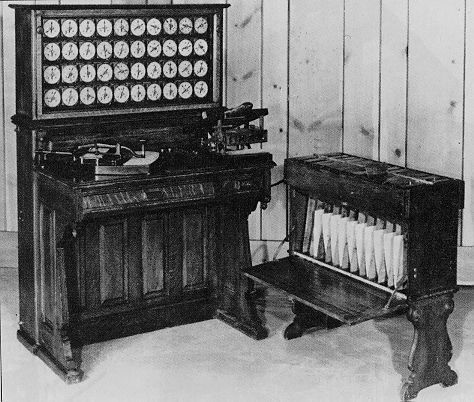The Hollerith Machine

The Hollerith Machine was created in 1890 by Herman Hollerith. It was made for the Census Bureau, to help count census ballots more quickly, through a competiton. It was also made to keep track of people coming through the railway transportation during this time. The agency held a competition in 1888 to find a more efficient method to process and tabulate data. Contestants were asked to process 1880 census data from four areas in St Louis, MO. Whoever captured and processed the data fastest would win a contract for the 1890 census. Herman Hollerith completed processing data much faster than others, making him a leading contender. Herman Hollerith's tabulator consisted of electrically-operated components that captured and processed census data by "reading" holes on paper punch cards, it was able to process 80. Hollerith's machine led to the foundation of IBM. By 1891, Hollerith's machines were being used to gather census information, through punch cards, in Canada, Austria, and Norway. Between 1890 and 1900, he expanded the commercial uses of his machines to include railroad freight statistics, business applications, and agricultural data. Later models were used for business applications. The original intent for the Hollerith machine was to keep track of people coming through railway transportation.